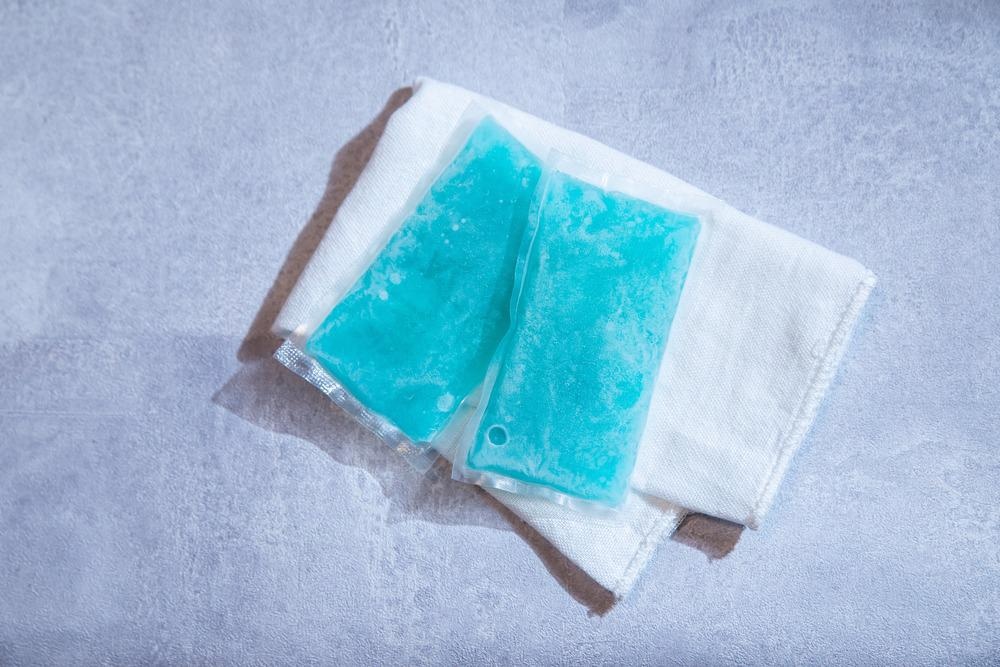New research in the journal ACS Sustainable Chemistry proposes JICs (jelly ice cubes) predicated on 10% gelatin hydrogels as novel, biodegradable food coolants.

Study: Sustainable and Reusable Gelatin-Based Hydrogel “Jelly Ice Cubes” as Food Coolant. II: Ideal Freeze−Thaw Conditions. Image Credit: patchii/Shutterstock.com
One of the main problems in promoting food security and environmental sustainability is reducing food loss and waste. Heat abuse in the spectrum of 4.4-60 °C during perishable food storage is one of the key factors that jeopardize quality and food safety.
Because of its high latent heat of fusion at 0°C, traditional ice is often utilized as a food chilling medium in food supply chains. However, there are worries about microbiological cross-contamination from glacier meltwater.
Ice packs and novel forms of antibacterial ice have been produced and explored as viable substitutes, as stated in the journal ACS Sustainable Chemistry Engineering. Despite these efforts, a void for an optimal food coolant still exists.
Jelly Ice Cube as Biodegradable Food Coolant
JICs (jelly ice cubes) predicated on 10% gelatin hydrogels have been proposed and evaluated as a different type of reusable, biodegradable food coolant fluid that could actually prevent microbial cross-contamination by restricting the cooling water aspect within the hydrogel structures with zero-plastic components.
Nonetheless, there are two major issues that need to be addressed in order for JICs to be more feasible in food chilling applications.
To begin, the thermal characteristics of JICs must remain stable during repeated freeze-thaw cycles in order to accomplish the reusability attributes of the very minimal reduction in heat-absorption ability.
Second, hydrogel systems should be designed with strong mechanical characteristics to ensure that structural damages and material defects are minimized during the numerous phase transitions of water in the hydrogels throughout FT cycles.
The degree of physiochemical linking of gel polymer must be good to develop a strong system. To improve JIC stability, researchers must investigate the effects of preparation and practical cryogenic settings on the structures, characteristics, and functions of JICs.
Hydrogels
Hydrogels are water-filled networks supported by a polymer matrix. Cryogels are hydrogels that have gone through several cycles of freezing, freeze storage, and thawing.
Water molecules in the hydrogel are categorized into three types based on interactions with natural protein polymers: freezable bound water, free water, and non-freezable bound water. When freezable water (both free water and freezable bound water) freezes, the phase transition causes possible disturbances or damages to the system.
Mastering the shape and size of the generated ice grains during freezing is a vital component in limiting the influence of the freeze-thaw process on the polymer network architectures.
By altering the nucleation rate, the freezing rate of water controls the size of the ice particles. Rapid freezing temperatures can probably be attributed to the prepping of JICs to reduce the usage of formed ice grains and the destructive impact of the phase transition of water on the polymer matrix systems, as influenced by the freeze-casting methodology in materials engineering and flash-freezing in food technology.
Ice Crystals on Systems
Meat and seafood storage conditions are also tuned to maintain the ideal food characteristics.
The influence of ice crystals on many systems has been studied in materials science. Ice-templating was widely utilized to generate diverse inorganic compounds with macro-, micro-, and mesoporosity by altering the chemical composition of the system and the freezing temperatures to modify the connection between the ice-fronting velocity and the critical velocity.
Controlling the freezing rate and pressure has a significant impact on the structure and function of the resultant materials, particularly aerogels, according to several studies.
The solidification and melting of water, on either hand, changed the water-protein relationships in the initial homogeneous hydrogel systems. With the tiniest levels of physical cross-linking inside the protein-polymer structure, the quick freezing and delayed thawing process reduced water loss.
JICs treated with Freeze-Thaw maintain the overall moisture content and freezable water content of the materials at a level similar to fresh JICs by reducing the creation of H-bonds and disulfide bonds inside the protein macro network, conserving the hydrophilicity of the materials and ensuring the cooling ability of JICs for 10 or more application cycles.
JICs, as a sort of innovative reusable and environmentally friendly cooling medium, should be resistant to the phase shift of water in hydrogel polymer matrices and provide constant cooling functions throughout time.
The considerable effect of ice grains generated during FT treatments on the structure and function of JICs was observed in previous work. Various FT parameters were thoroughly studied in this study in order to build a thin protein-polymer network by manipulating the ice grain production and fusing circumstances.
After many FT cycles, the combination of fast freezing and gradual thawing treatment conditions resulted in homogenous polymer network topologies.
The pattern discovered in the influence of freezing and thawing circumstances on the architectures and characteristics of hydrogels was consistent with previous research and might be used to guide the manufacture and use of JICs and other water-rich materials.
However, it should be emphasized that combining liquid nitrogen or dry ice and anhydrous ethanol in the creation of JICs in a quick freeze state may be only practicable for business users and out of reach for normal consumers. For the practical usage of such innovative cooling materials, a more convenient application process should be studied.
References:
Zou, J. (2021). Sustainable and Reusable Gelatin-Based Hydrogel “Jelly Ice Cubes” as Food Coolant. II: Ideal Freeze−Thaw Conditions. ACS Sustainable Chemical Engineering.
Disclaimer: The views expressed here are those of the author expressed in their private capacity and do not necessarily represent the views of AZoM.com Limited T/A AZoNetwork the owner and operator of this website. This disclaimer forms part of the Terms and conditions of use of this website.